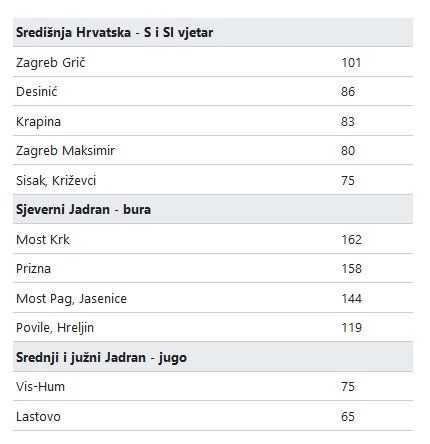In all fairness, we were warned: the weather forecasts late last week were quite clear, and even the European central weather warnings service Meteoalarm was clear that Sunday was supposed to bring strong winds throughout Croatia. The alarm was strongest for the central part of the country, where capital Zagreb is located, as well as regions around Velebit mountain, which are much more adapted too withstanding strong winds, as they are more frequent there. But, still, when Spring Storm 2019 hit Croatia yesterday, we were still surprised with the strength, and by now it's quite unusual how long it's been going on, especially in Zagreb.
If you've gone to literally any major Croatian website today, you probably saw numerous image galleries of damage that happened in Zagreb since Sunday afternoon when the worst of the winds started. This morning all emergency services asked the citizens of Zagreb not to go out into the storm unless they had to (of course, it's a normal workday, so people had to go to work, which lead to the mass extintion of umbrellas in Zagreb), and Zagreb Mayor Milan Bandić said that this was the worst wind-storm in Zagreb in the past 45 years. A similar event happened on November 11th, 2013, strong winds were also responsible for a lot of damage in Zagreb and on the Medvjednica hill, but the strong winds probably lasted for a shorter period of time.
Croatian Meteorological and Hydrological service published the table of the strongest winds recorded in Croatia this morning (wind speeds in km/h):

In addition to strong winds, a lot of rain was also forecast for parts of Croatia as a part of this storm, and a lot of rain has already fallen in certain areas of Croatia. Central, mountinous part of Croatia and parts of coastal Croatia received the most of the rain, but in the next 12 hours it is expected that the rainfall will increase in the rest of the country too. So, today the Meteorological service is warning that some flooding in Croatia can be expected once the rains hit in earnest.
The Spring Storm 2019 is the result of two separate weather masses hitting each other right above Croatia: a high-pressure cold air arriving from the North (which has already brought cold weather to most of Northern Europe) collided with the low-pressure cyclone centered around Southern Italy. The difference in the temperatures and the pressures created the winds, and the moisture which will be turned into rain is arriving from the South.


